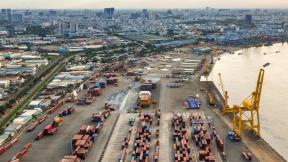The growth of China’s exports to advanced and emerging economies following its accession to the World Trade Organisation (WTO) in 2001 represents an important import shock that induced substantial adjustments to local labour markets. Most of the literature analysing those adjustments focuses on changes in employment and wages especially in the manufacturing sector. The existing literature on labour market adjustments has neglected the structural shift between formal and informal employment as an important margin of labour market adjustment, and the role that labour market rigidity plays in influencing this adjustment process. This literature also overlooks the influence of spatial dependency rising from labour market pooling of workers, knowledge spillovers between regions, input-output linkages across firms in different regions, and migration of workers between regions, among other factors. This study addresses these gaps by analysing how informal and formal local labour markets adjust to import shocks and how this adjustment process is affected by labour market rigidity, accounting for spatial dependency.
To identify the impact of import shocks on informal and formal local labour markets, this study uses China's export growth following its entry into the World Trade Organisation (WTO) in 2001 as an exogenous import shock, as is now common in literature. The study uses South Africa as a case study, with the analysis covering 7 years, from 1997 to 2003. Data on imports is accessed from the UNCOMTRADE database, which is merged into Post-Apartheid Labour Market Series (PALMS) version 3.3.1 by year and industry, and construct a measure of regional exposure to import competition as done in the literature. The study tests for spatial dependency in informal and formal labour markets using the Global Moran test. Two-stage least squares and spatial econometric techniques are employed, using magisterial districts as a unit of analysis.
The results of the study are relevant to low and middle-income countries characterised by labour market rigidities and regulations, showing how employment, both formal and informal employment adjusts to import competition. This provides policymakers with insights into how labour market institutions such as trade unions may affect employment in a competitive global environment, which would result in a trade-off between efficiency and employment loss arising from competition. The results also suggest that since regions are not independent of each other, through labour migration, labour market pooling, and input-output linkages of firms across space, regional labour market policies may not only affect the region itself but may have spillover effects to other regions.






































